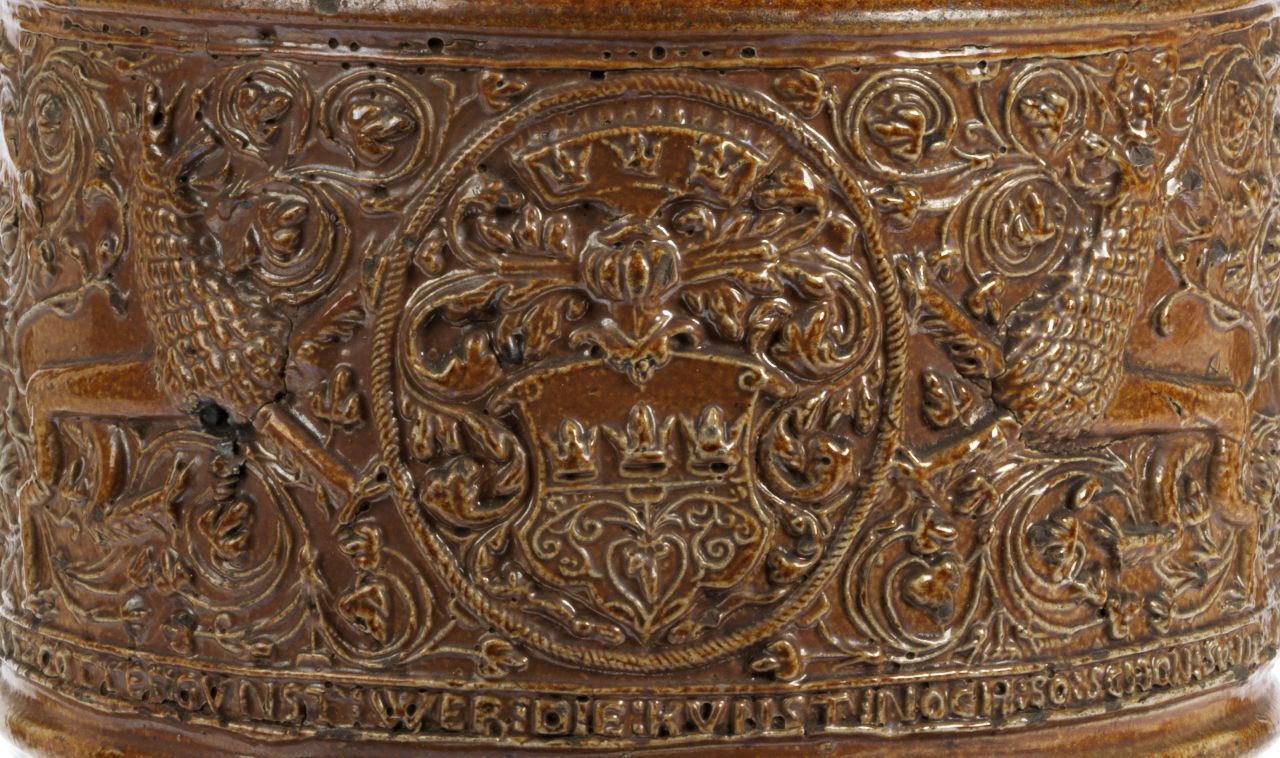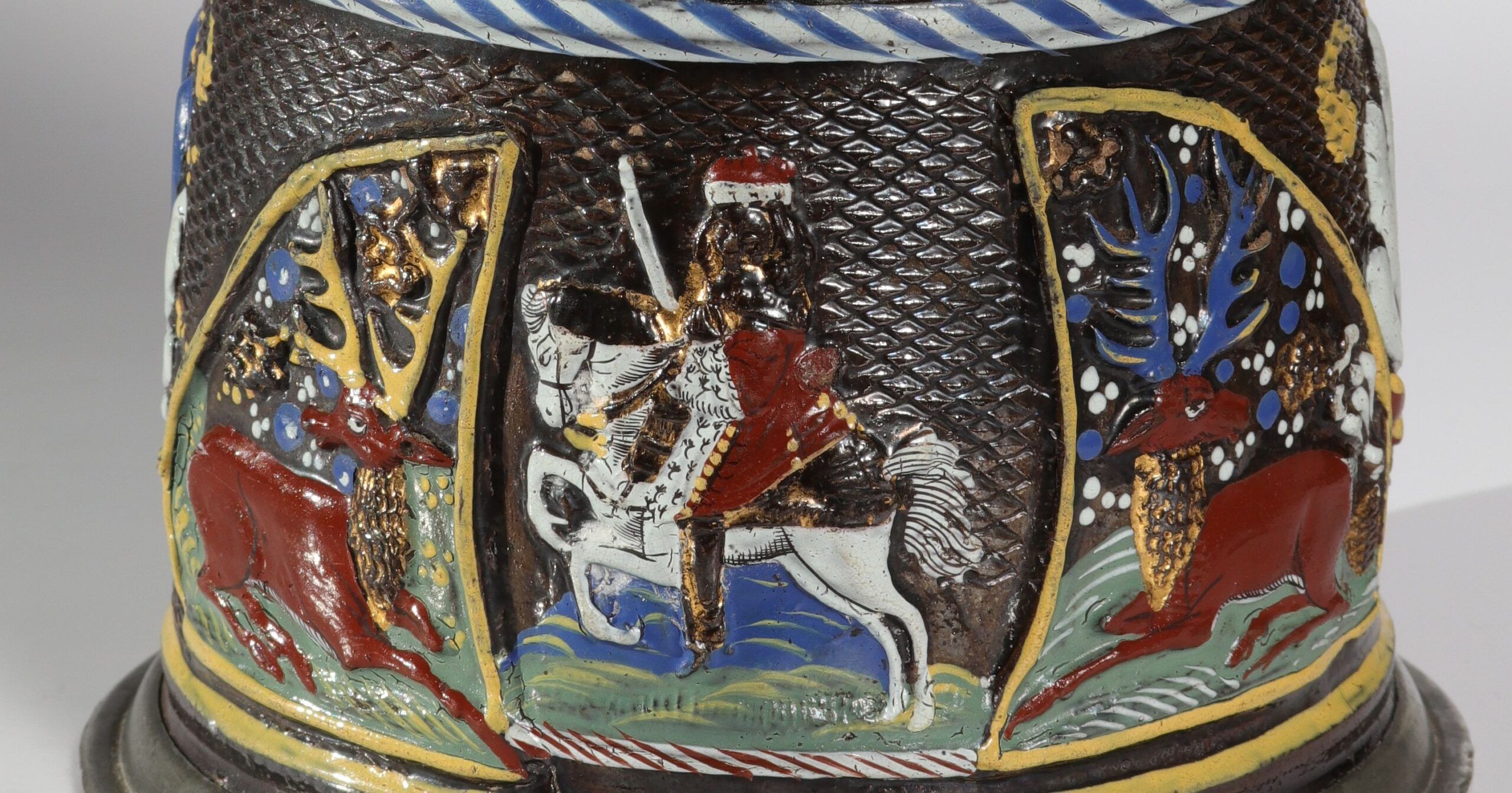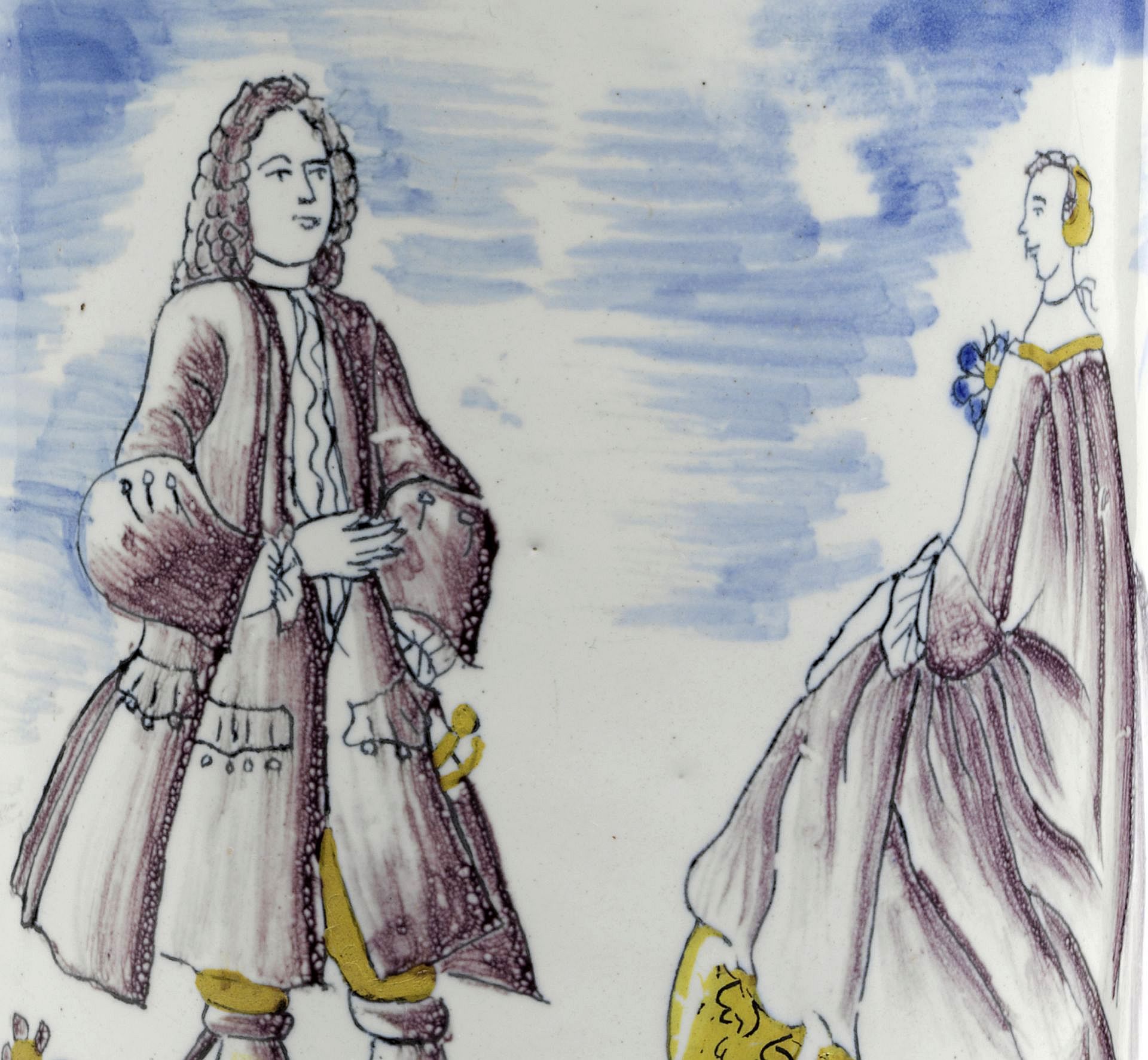V+A Highlights Paul Preuning
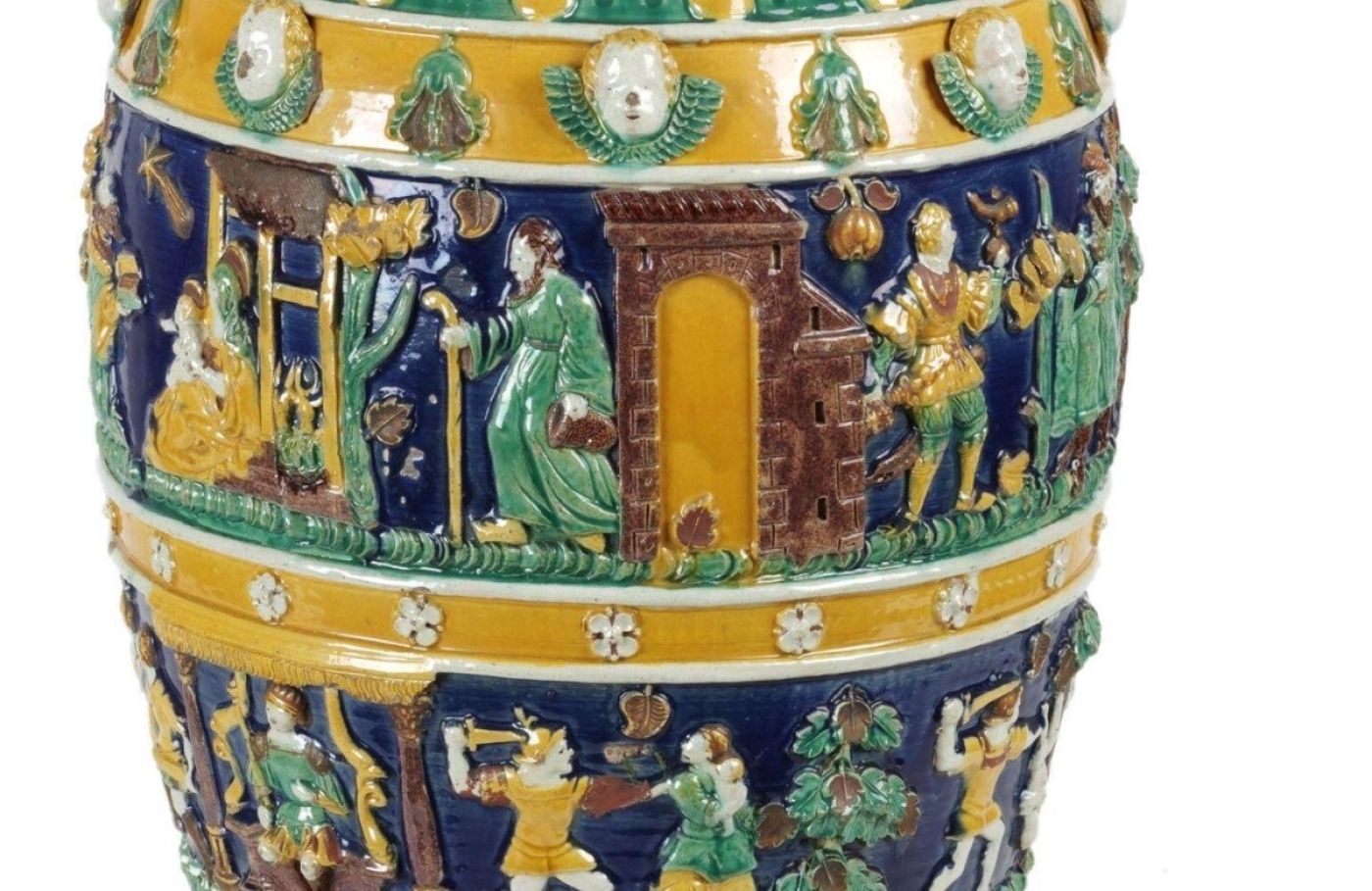
Nürnberger Hafnerkrug aus der Werkstatt von Paul Preuning ca. 1545-1555
in der Keramik Abteilung des Victoria and Albert Museums
Browse the collection with this link https://www.vam.ac.uk/collections?type=featured
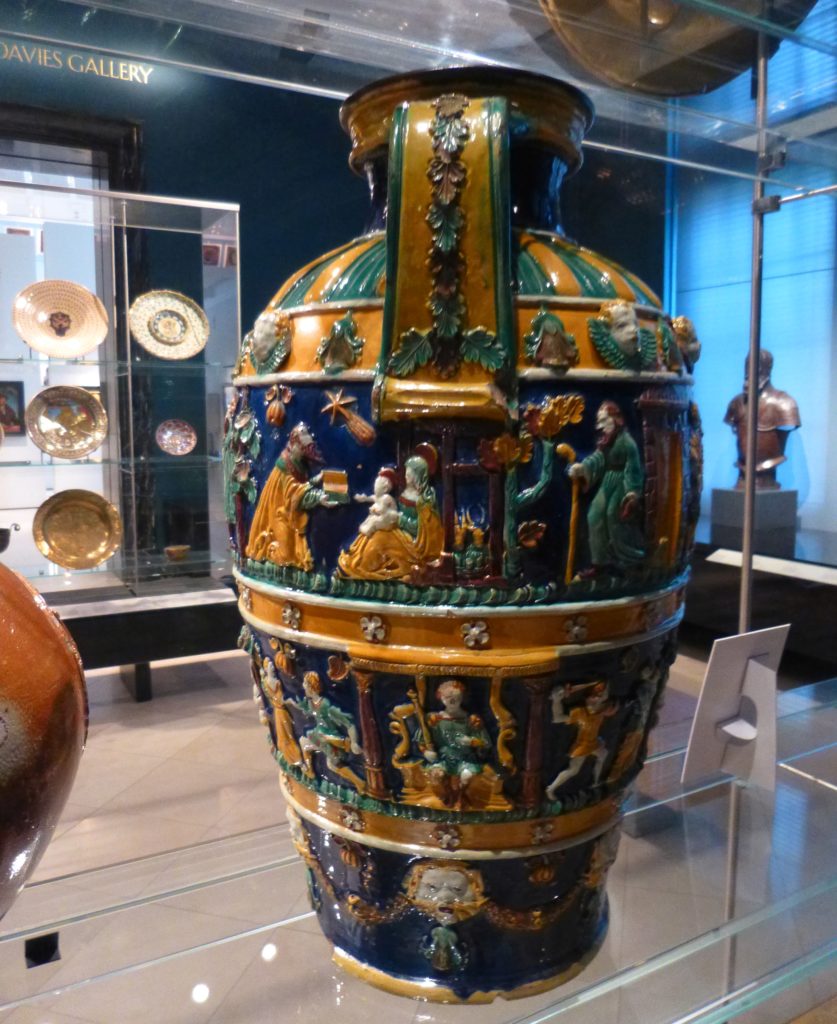
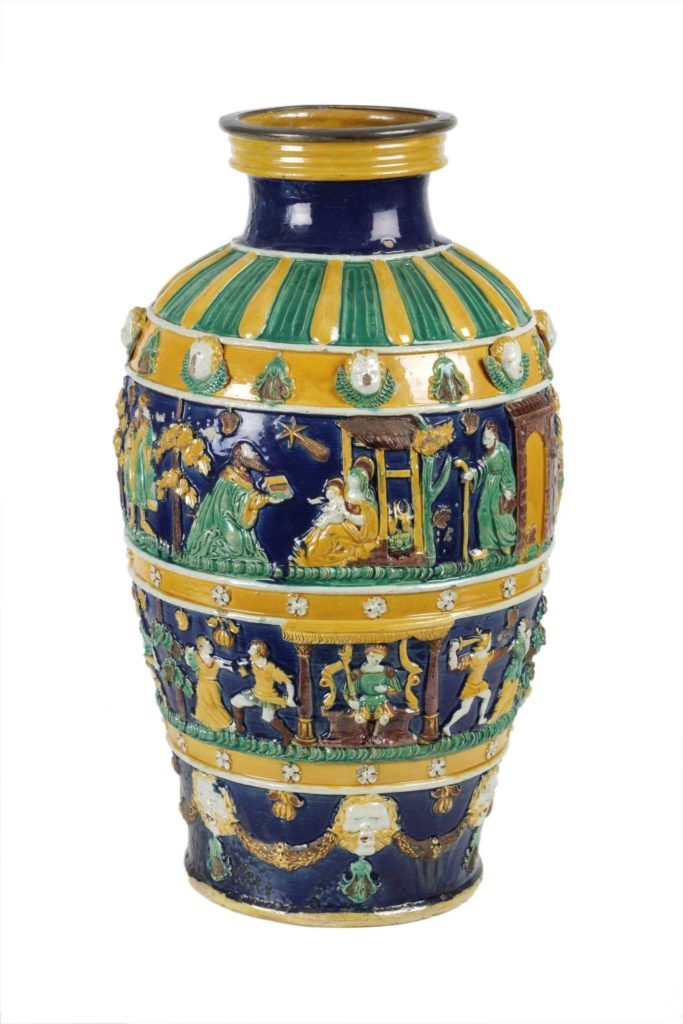
Earthenware jug decorated with coloured glazes and applied moulded decoration depicting the Adoration of the Magi and Massacre of the Innocents, workshop of Paul Preuning, Nuremberg, Germany, about 1545-55
Height: 53.5cm
Width: 31.3cm
Diameter: 30.7cm
Weight: 3.3kg
copyright: V+A Museum
https://collections.vam.ac.uk/item/O117410/jug-preuning-paul/
Large jug with narrow neck and small strap handle decorated with applied oak leaves. The jug has two wide horizontal zones, the upper with applied moulded figures representing the Adoration of the Magi and the lower with Herod enthroned and the Massacre of the Innocents. Each scene has beneath it a narrow yellow band decorated with applied white rosettes. Above the Adoration scene is a band decorated with applied moulded angel heads with small wings. Below the lowest rosette band on a dark blue ground are applied moulded masks, with yellow hair and beards, linked by garlands with fruit hanging from the centre of each.
The Gospel of Matthew (ch.2, vv.1-12) describes how Magi from the East followed a star to Jerusalem in order to worship the infant King of the Jews. King Herod the Great asked his advisers where the Magi would find the child. His advisers suggested Bethlehem in Judaea, as prophesied in the Book of Micah. Herod asked the Magi to report back to him so that he could pay homage too. The Magi found the Virgin Mary with her new son Jesus and presented to him three gifts of gold (for kingship), frankincense (for divinity) and myrrh (used in embalming, a foreshadowing of the crucifixion). Warned by God in a dream not to report back to Herod, they went home by an alternative route. The Church commemorates this event as the Epiphany (or the manifestation of Christ) on 6th January. The Magi were presumed to be three in number because they presented three gifts. They may have been astrologers at the Persian court and priests of the cult of Mithras then widespread in the Roman Empire. In subsequent centuries the story was embroidered – Tertullian (about 160-230 A.D.) called them Kings and by 9th century they were given the names Caspar, Balthazar and Melchior. They also came to symbolise global worship of Christ, each apparently from a different age group and being made to represent the three known Continents of Europe, Africa and Asia.
Matthew’s Gospel (ch.2, vv.16-18) also recounts how (when the Holy Family had fled to Egypt) Herod realised that the Magi had left without reporting back to him, so ordered the massacre of all boys aged two and under in Bethlehem and its vicinity. This terrible act was prophesied in the Old Testament by Jeremiah (ch.31, v.15).
Read more about this very interesting jug, object history and historical context ith this link
https://collections.vam.ac.uk/item/O117410/jug-preuning-paul/
